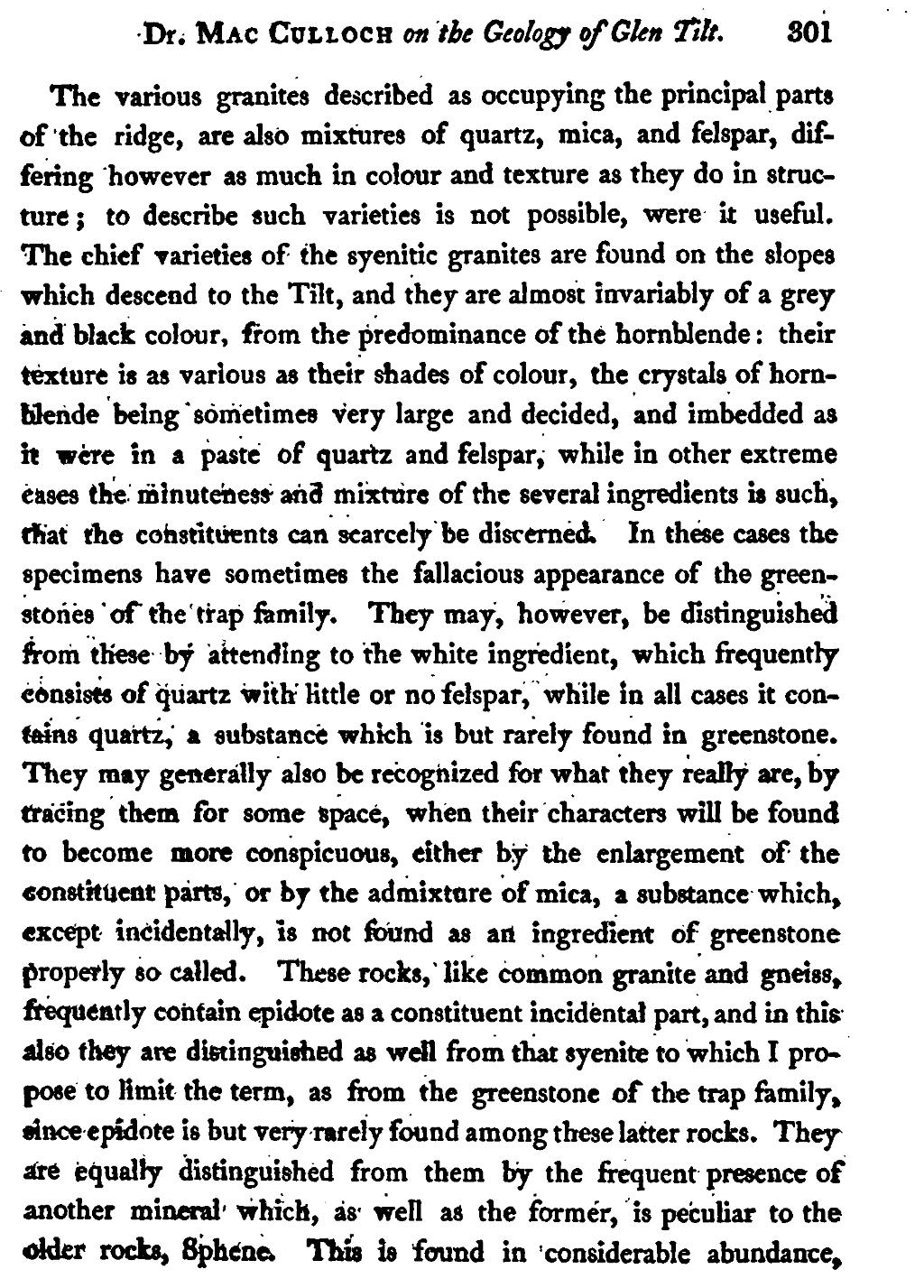The various granites described as occupying the principal parts of the ridge, are also mixtures of quartz, mica, and felspar, differing however as much in colour and texture as they do in structure; to describe such varieties is not possible, were it useful.
The chief varieties of the syenitic granites are found on the slopes which descend to the Tilt, and they are almost invariably of a grey and black colour, from the predominance of the hornblende: their texture is as various as their shades of colour, the crystals of hornblende being sometimes very large and decided, and imbedded as it were in a paste of quartz and felspar, while in other extreme cases the minuteness and mixture of the several ingredients is such, that the constituents can scarcely be discerned. In these cases the specimens have sometimes the fallacious appearance of the greenstones of the trap family. They may, however, be distinguished from these by attending to the white ingredient, which frequently consists of quartz with little or no felspar, while in all cases it contains quartz, a substance which is but rarely found in greenstone. They may generally also be recognized for what they really are, by tracing them for some space, when their characters will be found to become more conspicuous, either by the enlargement of the constituent parts, or by the admixture of mica, a substance which, except incidentally, is not found as an ingredient of greenstone properly so called. These rocks, like common granite and gneiss, frequently contain epidote as a constituent incidental part, and in this also they are distinguished as well from that syenite to which I propose to limit the term, as from the greenstone of the trap family, since epidote is but very rarely found among these latter rocks. They are equally distinguished from them by the frequent presence of another mineral which, as well as the former, is peculiar to the elder rocks, Sphene. This is found in considerable abundance,
